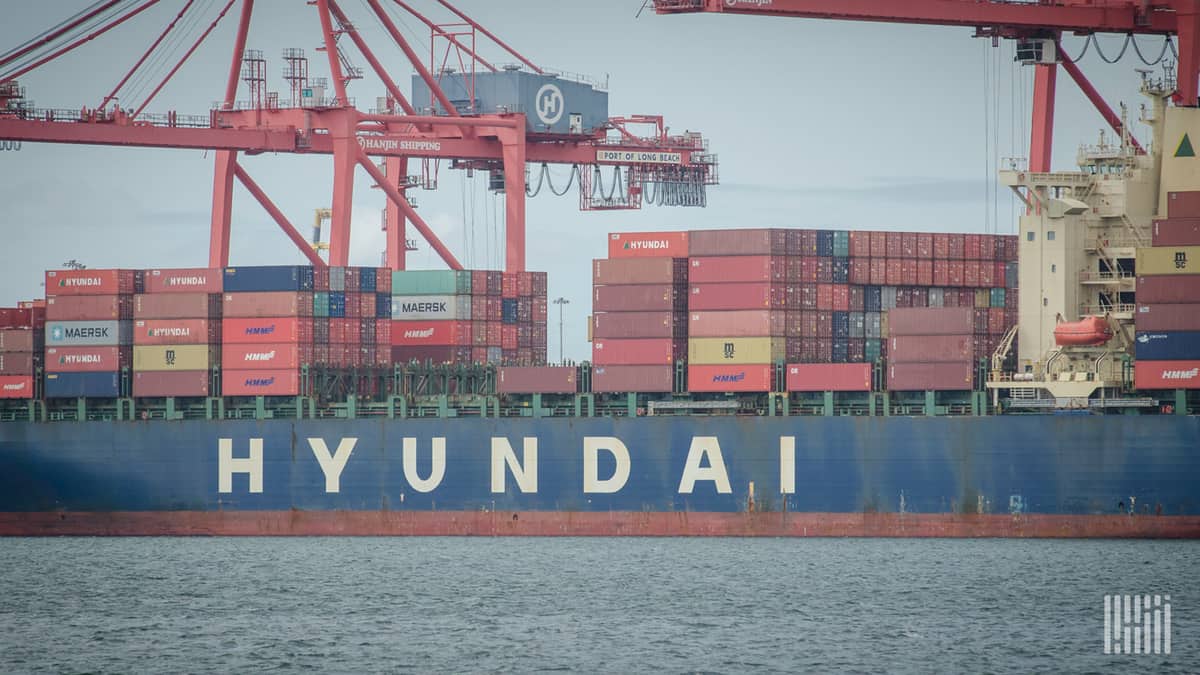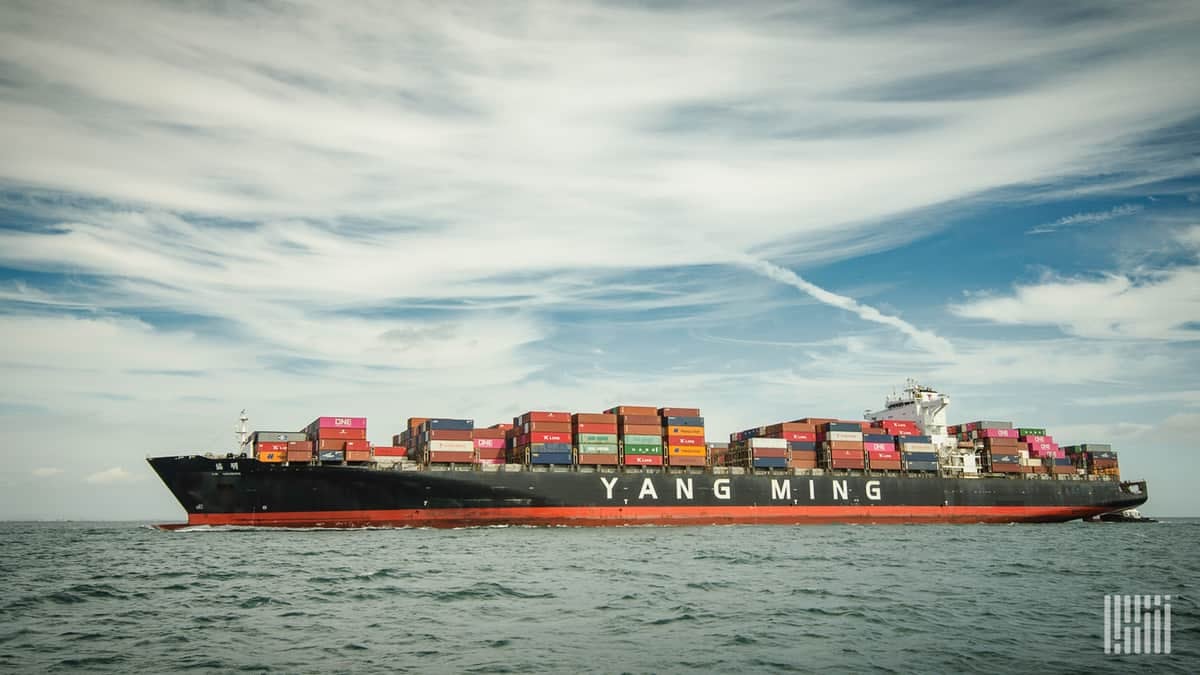The views expressed here are solely those of the author and do not necessarily represent the views of FreightWaves or its affiliates.
Managed trade, ironically, is hard to manage. This is especially true when it is between the world’s two largest economies trying to settle their trade and political disputes. The U.S.-China trade war entered a détente of sorts with the “Phase 1” trade deal signed on January 15, 2020. Between January 1, 2020 and December 31, 2021, China is required to import more U.S. manufactured and agricultural goods, energy products and services (all identified in Annex 6.1 of the deal). This extra trade flow is required to exceed the 2017 baseline amount in these commodities by at least $200 billion. If this happens the U.S. merchandise trade deficit with China will fall – all other things held constant, of course.
For instance, China agreeing in principle to buy a further $32 billion of U.S. agricultural exports over two years remains to be seen due to the recent political posturing over COVID-19’s cause and effect and the situation in Hong Kong. Cracks in the U.S.-China détente are starting to show. At any rate this sort of managed trade means that China’s import purchases are locked in no matter what future market conditions are. Not only is this not free trade, this is not even free enterprise.
Managed trade is certainly not free trade because pre-existing trade restrictions are either in force or remain at the ready whenever one side pleases. In fact, the new deal employs a dispute resolution mechanism whereby a complaining party can institute a “counter-response” (e.g., countervailing trade duties). The other party’s only recourse at that point is to withdraw from the agreement because no further tit-for-tat retaliations are allowed in this agreement. Time will tell if this method will incentivize both sides to work more closely or use the threat of withdrawal to force concessions.

(Photo: Jim Allen/FreightWaves)
Agricultural trade with China threatened?
Consider soybeans, which were the most prominent U.S. agricultural export even before the new deal came into effect. Though there is a uniform world price for soybeans, China’s imports from the U.S. and other sources in South America, for example, bring about different landed costs (i.e., the cost of a kilogram of soybeans, f.o.b. the port of entry). The world price of soybeans is benchmarked by U.S. production since it is the world’s largest source. The world price is set every Friday in U.S. dollars per kilogram based on the monthly moving average of weekly prices for U.S. No. 1 Yellow soybeans, f.o.b. the U.S. Gulf of Mexico.
It begs the question, if the U.S. has the lowest landed cost, would not China have bought more U.S. soybeans at the expense of other exporters already? If not, then trade will shift out of Brazil (the world’s second-largest producer) to the U.S. Of course, if China already cost-effectively buys its fill of soybeans from the U.S. and other exporters, buying any more is a misallocation of resources pure and simple. So, managed trade’s shifting of global supply chains without the disciplinary benefits of price signals serves to disincentivize cost control. But, then again, both the U.S. and China are currently practicing neo-mercantilist trade policies anyway.
Of course, just like free trade agreements are not “free trade” in the literal sense, even they have elements of managed trade built within them. Rules of origin, for example, are subjective valuations concerning what percentage of the domestic value-add of an export makes it eligible for duty-free shipping between the free trade partners. These are spelled out in the United States-Mexico-Canada trade agreement (USMCA) and in its predecessor, the North American Free Trade Agreement (NAFTA).

(Photo credit: Jim Allen/FreightWaves)
Moving complicated supply chains
Larry Kudlow, Director of the White House’s National Economic Council, made headlines in early April when he suggested that U.S. firms be granted “100% expensing” of the costs of moving their supply chains out of China and, presumably, to U.S. territory. He noted plant, equipment, intellectual property, structures and renovations as eligible items. Of course, this presumes that most of the U.S. presence in China is in the form of foreign direct investment (FDI). Greenfield investment and purchasing of pre-existing infrastructure are both examples of FDI. Regarding the latter, however, the percentage stake in ownership can be as little as 10% to qualify.
In 2018, U.S. FDI in China was about $117 billion. Of course, with only a 10% ownership threshold, many of the companies would not be considered true U.S. subsidiaries to begin with. Also, much of the U.S. supply chain presence in China is contracted with Chinese vendors rather than mergers and acquisitions. Indeed, the contracting model is one of the main reasons for the rapid growth of global supply chains running through China. In that regard, this means there is a lower level of tangible assets than meets the eye for U.S. firms to bring home from China.
What of intellectual property (IP) as mentioned in Kudlow’s list? IP is an intangible asset and if it is owned by a U.S. firm there is nothing to repatriate and expense. As an example, Apple’s patents granted in the U.S. are either respected in China or they are not. Apple has a contractual relationship with vendors operating in China that leverage Apple’s IP through licensing or other arrangements. Apple cannot leverage those vendors’ tangible assets and ship them to the U.S.
Despite repatriation generating catchy headlines, supply chains are simply too complicated. They resist the convenience of thinking of them in terms of simply packing them up and moving from one country to another. Firms and their vendors work best when clear price signals allow them to assess cost, risk and opportunity. From there each player can decide on how to build resiliency to COVID-19 as well as any other supply chain disruption that comes along.
Click here to see other commentaries by Darren Prokop on American Shipper and FreightWaves.










